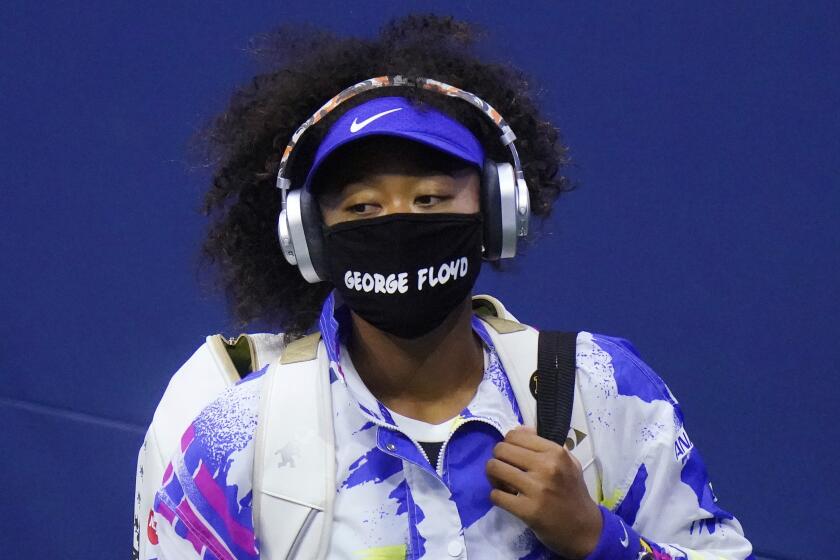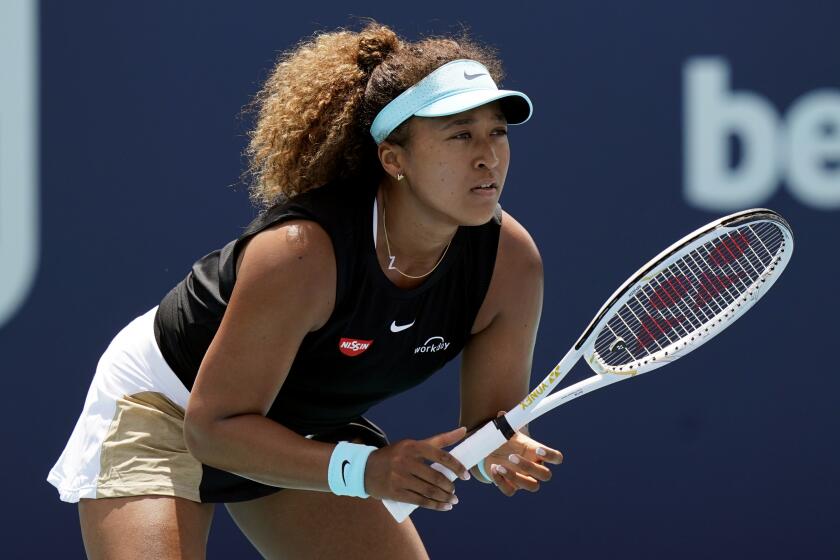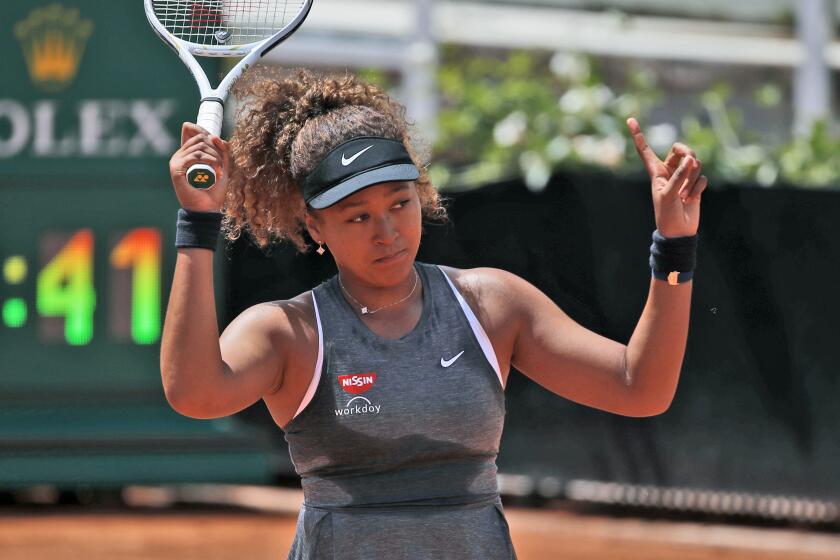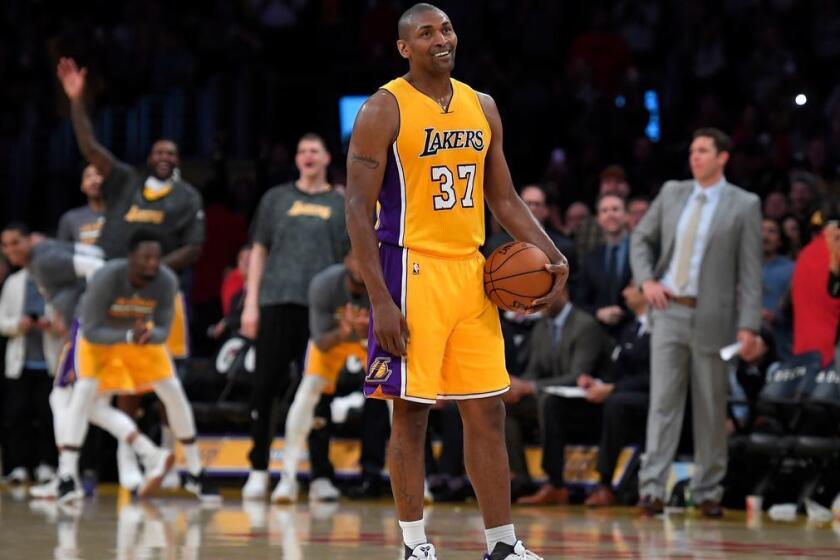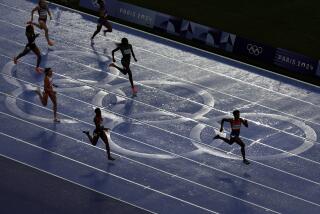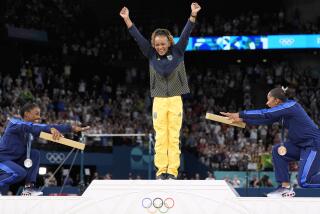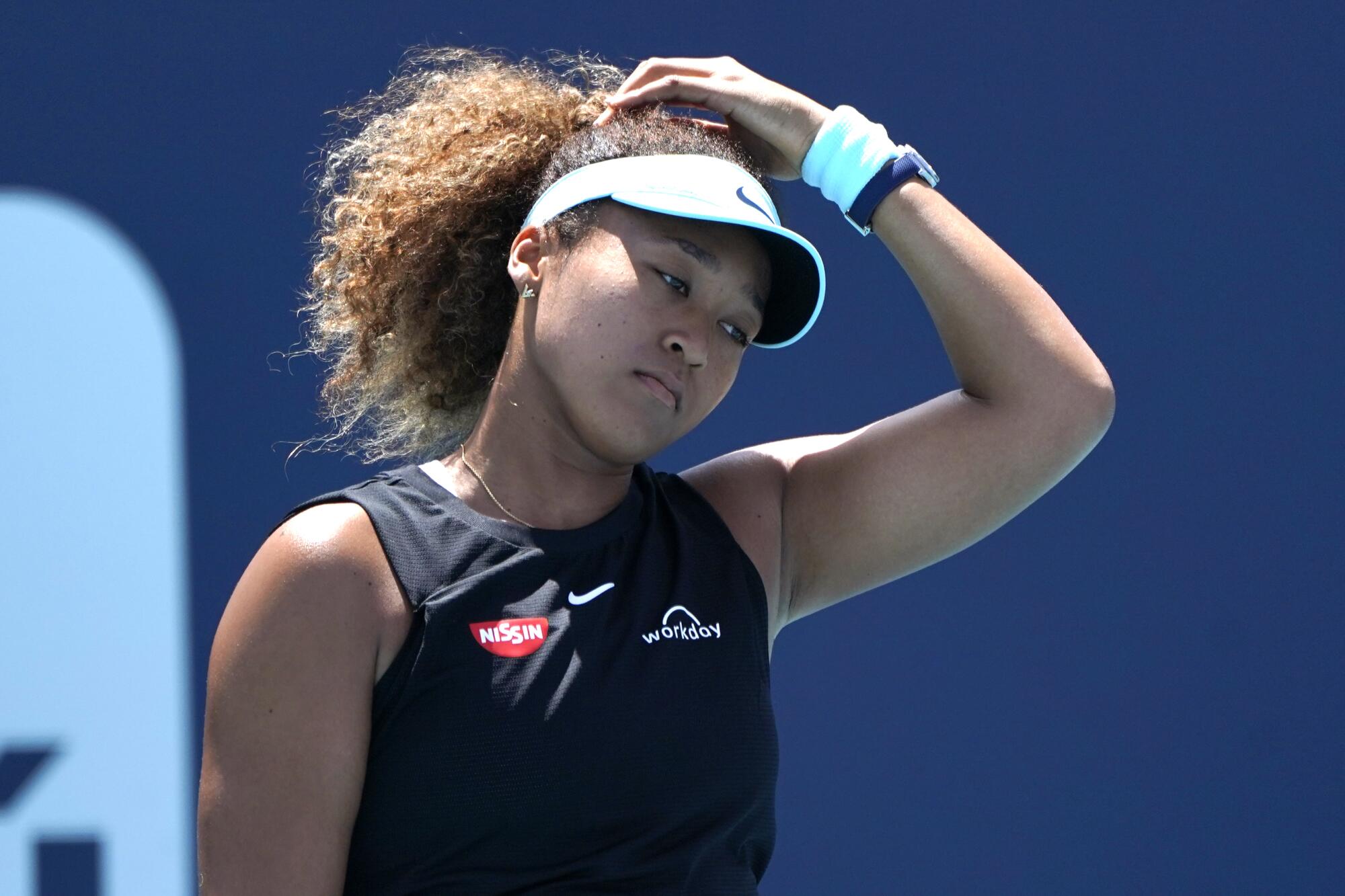
- Share via
Naomi Osaka’s initial decision to skip French Open news conferences and her later withdrawal from the tournament due to her battle with depression and anxiety sparked international debate about the role of media and athletes’ mental health.
Los Angeles Times columnists Helene Elliott, LZ Granderson, Dylan Hernández and Bill Plaschke answer some key questions raised by Osaka’s exit.
Is the postgame news conference format less than ideal for both athletes and media? What do you feel would be a better format for a two-way conversation with athletes?
Granderson: Depends on the sport. Because this discussion is coming off of Osaka, it’s important to remember that professional tennis is not governed by a single body. As a result, there isn’t a single way things are done nor a single overseeing body to lead a discussion. So to look at tennis through American eyes without taking that into account would be a mistake. I never liked the way tennis pressured the loser to speak so soon after a defeat. If that player takes too long, they’ll be referred to in a negative light.
I don’t think the problem is in the initial format. The problem is with the lack of flexibility to account for the ebbs and flows of a person’s humanity. This notion that we all have a job to do is all fine and dandy, but that doesn’t mean everyone has to do that job in the exact same way. For introverts with an extrovert career, news conferences are not edifying.
Her move highlighted an issue long bubbling in sports: When stress is part of the game, what’s the best way to handle an athlete’s mental health?
Hernández: Really depends on what you’re looking for. If you want to gather information for a feature or get into X’s and O’s, the format isn’t what journalists want, since each of them often aren’t afforded follow-up questions. But if the point is to hold someone accountable — MLB commissioner Rob Manfred or Astros owner Jim Crane answering questions about the sign-stealing scandal comes to mind — this works, so long as the reporters know what they’re doing. When the interview subjects are in front of a room full of reporters and a bank of cameras, there’s nowhere to run, as there might be, say, in a stadium hallway. In a setting like this, even a non-answer can say a lot.
However, the reality is that most people in our line of work are really bad at asking questions. Because of this, because the majority of questions are “fluff” from reporters afraid of upsetting anyone, I’ve always imagined it’s easier for an athlete who messed up to answer questions in a news conference setting than in a locker room.
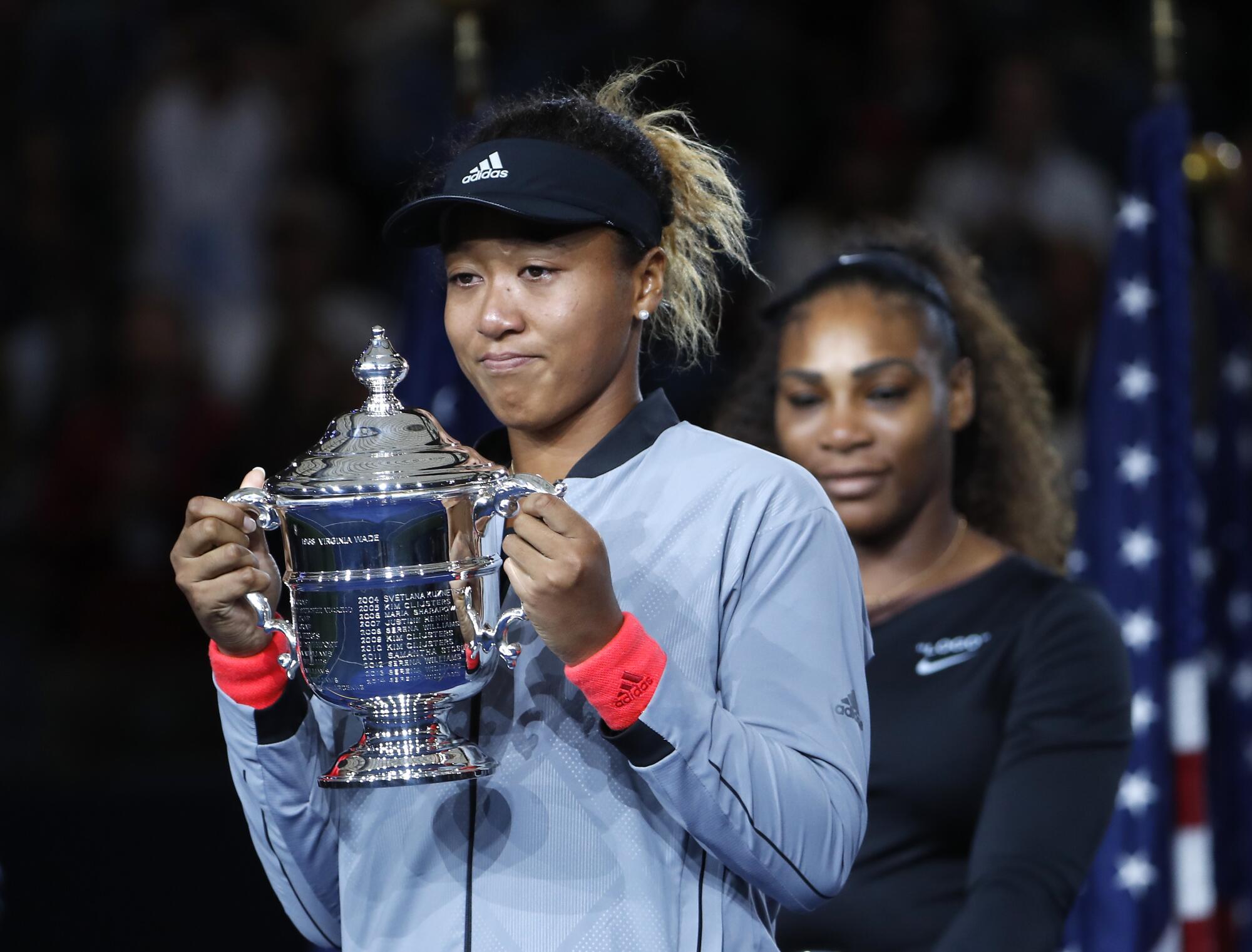
Plaschke: I should start off by saying I don’t think athletes have any obligation to talk to the media. They don’t owe it to us. They don’t owe it to the fans. They’re not making public policy. They’re entertainers. They don’t owe the public anything other than their best effort on the playing field as a reciprocation for the purchase of a ticket. I don’t need them to talk to me to do my job. They don’t need to talk to me to do their job.
However, many sports entities do believe athletes have an obligation to talk to the media for the good of the sport, so much so that their bylaws have rules forcing them to talk or they suffer penalties. Under those rules — not the media rules, the league’s rules — the postgame news conference format is actually the best and easiest way to facilitate mass communication between athletes and media.
That’s why it’s universally used even in events with greatly limited access. News conferences are safer for the athlete by ensuring the athlete is in a controlled environment with a moderator who can hand-pick the questioners. News conferences are better for the media because they ensure that everyone will theoretically have a chance to ask a question and hear every answer. Without a news conference format, the athlete is swarmed by packs of journalists screaming questions to an athlete who has no control over the narrative.
Naomi Osaka’s decision to not participate in news conferences at the French Open is drawing reactions from Billie Jean King, Rafael Nadal and others.
What is the biggest misconception you’ve seen circulating in response to Naomi Osaka’s statements and how would you address it?
Elliott: The biggest misconception is that she’s a spoiled brat and she’s rich and being rich means you don’t have mental health problems. Being rich would make it easier to pay for treatment, I guess, but that person isn’t automatically more inclined to admit to having problems and seeking help if they’re rich.
Granderson: That it’s all about her. It is in the sense that she is the one voicing concerns, but anyone who thinks she’s the only athlete who feels this way hasn’t spoken to a sports psychologist or even paid attention to what the pros have been saying. LeBron James talks about mental health all the time. Phil Jackson, as coach of the Lakers, did as well. It’s been right in front of our faces for years.
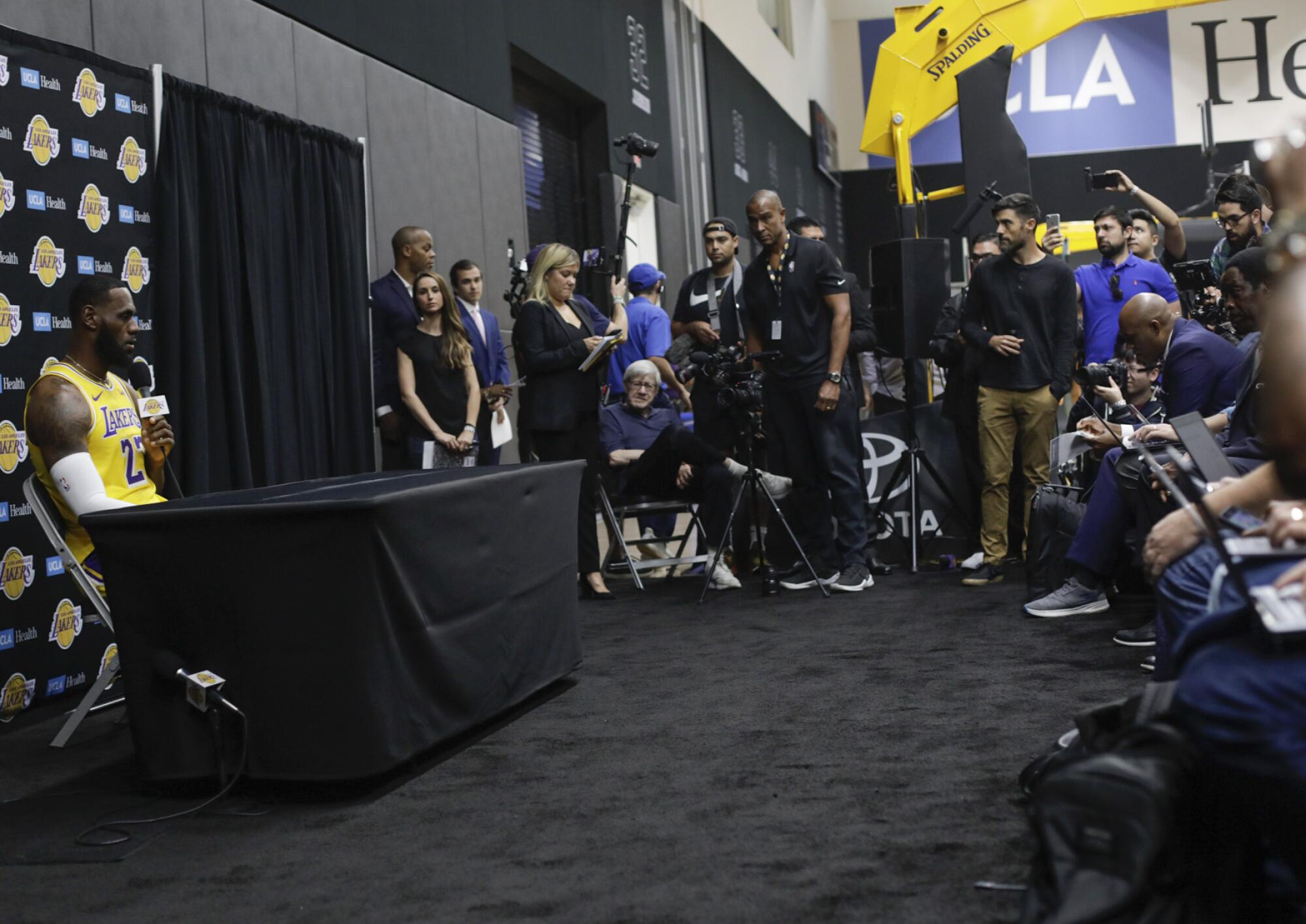
Hernández: Maybe I’m missing something, but I don’t think this is a media story at all. Based on what Osaka and her sister have said or written, it’s clear she didn’t want to be asked about her troubles on clay because it’d plant doubts in her head. The fact she feels that being asked these questions would be detrimental to her mental health, we can surmise that she’s basically treating this tournament as a life-or-death matter. So, a large part of her sense of self-worth is tied up in how well she performs. In her mind, it doesn’t matter how much better she is on other surfaces; if she doesn’t succeed on clay, she sees herself as a failure. That’s the real problem here.
Most athletes who reach the top of their professions have predatory mentalities. Every now and then, however, there will be someone immensely gifted who has the sensibilities of a normal person. They tend to be very kind and introspective people, and they often make the best interview subjects. But the world of sports is uncompromising. Results are black and white. You win or you lose. In other walks of life, people who are mediocre at their jobs can still be respected for some of their other qualities. Here, it’s mostly about the scoreboard.
Naomi Osaka revealing her struggles with depression and anxiety shows why her decision to withdraw from the French Open deserves understanding.
If you’re a prodigy who is unfamiliar with failure, I would imagine such a world would be terrifying, even mentally unhealthy, to inhabit. Years ago, when I was the Dodgers beat writer, the team had a left-hander named Hong-Chih Kuo who had one of the most dominant pitches of any reliever in baseball history. A year later, he went on the disabled list with an anxiety disorder.
As tennis’ highest-paid player, Osaka probably felt she couldn’t just take a leave of absence like that. She’s probably needed a break from the game for some time. For her sake, it’s good she’s taking it.
Plaschke: People act like it is Osaka against the media. That’s not the issue. The conflict is between Osaka and her concern for her emotional well-being against the tennis hierarchy holding her to rules that apply to every player. Both sides were simply protecting their interests. The issue is whether those media rules need to be changed so the punishment for breaking them is not so harsh as a tournament default. If Kyrie Irving doesn’t talk, his team doesn’t lose a game, he just loses money.
The biggest misconception is that she’s a spoiled brat and she’s rich and being rich means you don’t have mental health problems.
— Helene Elliott on Naomi Osaka
How would you explain your job to anyone who believes athletes should no longer do any media interviews at all?
Elliott: By asking questions that explore an athlete’s motivation or preparation or background, we provide insight into why athletes perform as they do. Some thrive under pressure. Some tense up. By interviewing athletes, we convey to fans the reasons athletes did what they did and answer the question every fan sitting on a couch watching a game inevitably asks: “What was he thinking?!”
Granderson: You ever tried canceling cable through an automated service as opposed to an actual person and then, after you’ve given up, it asks if there’s anything else they can do to help you despite not helping you the first time? That’s me trying to write a story after a game without access.
Like Naomi Osaka, who decided to exit the French Open, Mardy Fish once stepped away from a successful tennis career because of mental health issues.
Hernández: Here’s the funny thing: When I ask an athlete about a play or statement they botched, I feel like I’m doing them a favor. I’m giving them a chance to explain themselves. Most of the time, this ends with the athlete being portrayed more positively — or at least with his or her side presented — and me losing a great one-liner. It’d actually be much easier to stay up in the press box, never go into the locker room and just write what I want. Look, they can do what they want — talk, don’t talk, whatever. But I’d suggest to athletes to really think this through. Just remember: If you don’t tell your story, somebody else will.
Plaschke: I would explain it as, I agree with them. We can write stories without postgame quotes. European soccer writers have been doing that for many years. Now, I certainly enjoy quoting athletes, and it makes my job a lot easier, and I’m thrilled that sports entities have decided that their athletes speaking to us is good for their sport, because it is. But talking to the media is, and should be, a league mandate, not a media mandate.
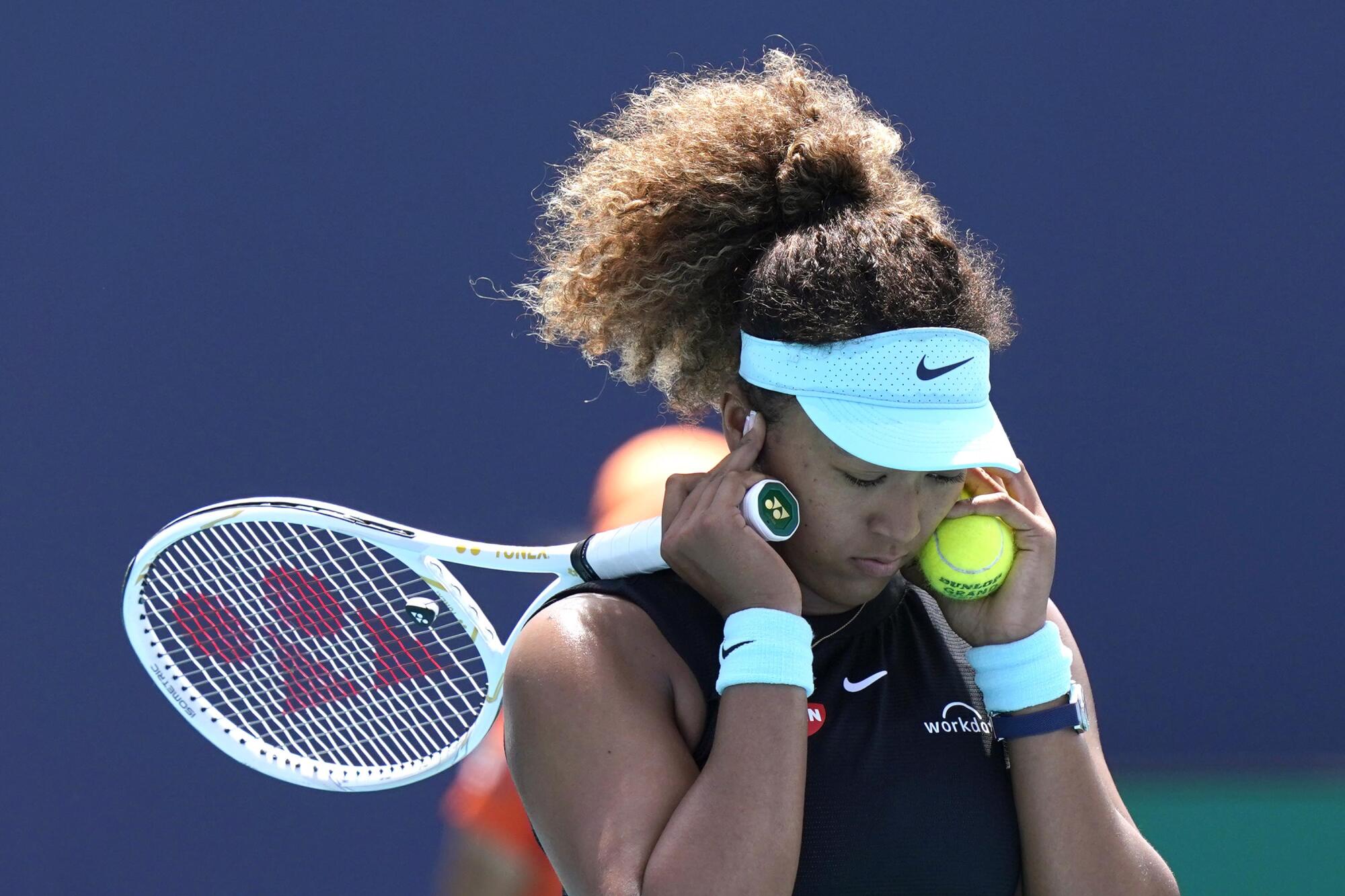
What do you hope people learn from Osaka’s statements?
Elliott: I hope people learn that mental health issues should be talked about without shame.
Granderson: That if a player withdraws from a tournament for mental health reasons, that is akin to withdrawing due to a physical injury.
Hernández: I do think this is an opportunity for us to reexamine our win-at-all-costs culture — but I’m sure we won’t.
Like, seriously, Osaka has been talking about her depression for at least three years at news conferences. Did anyone in leadership stop to ask what could be done to help?
— LZ Granderson
Plaschke: I hope people realize that even the greatest and most charismatic of athletes can struggle with the mental health issues plaguing the general population. We need to look at these athletes as humans, not superheroes. And, if they have acknowledged mental health issues, we need to think about that the next time we’re booing or heckling or ripping them in either mainstream or social media.
All of you here were around when Metta World Peace gave voice to the mental health struggles of athletes more than a decade ago? What did we learn from that, and what do we still have to learn from that?
Elliott: I guess we haven’t learned enough from Metta World Peace and his struggles, since we’re still talking about that issue and still hearing people insist that Osaka’s problems either aren’t real or aren’t legitimate.
Granderson: The response to Osaka demonstrates we haven’t learned much of anything as an industry. Consider the way Ricky Williams was bullied ... not much different than Osaka. The reality is, people don’t do well in this space because of stigma. We need more athletes and others who are perceived to be strong to make their voices heard. The quicker we can move past stigma, the faster we’ll actually be able to hear when an athlete is asking for help. Like, seriously, Osaka has been talking about her depression for at least three years at news conferences. Did anyone in leadership stop to ask what could be done to help? I’ve been to tournaments. I see how car sponsors make sure vehicles are available; stringers are on site; hair care if you want it. Tournament directors can certainly figure out a way to help athletes manage mental health, if it is viewed as important.
He joined the Lakers in the summer of 2009 as a troublemaker, a pariah, a plague.
Plaschke: His name was Ron Artest at the time, and he was known as a violent player and nasty human. Yet his sudden public pronouncements about mental health changed that perception, and Artest changed with it, eventually becoming Metta World Peace and transforming into one of the most engaging, friendly and introspective of stars.
When he thanked his psychiatrist on national television after Game 7 of the 2010 NBA Finals, that did more for our awareness of athletes’ mental health than anything in history. It opened the door not only to World Peace’s evolution but also to the healthy transparency of many other athletes who have since acknowledged anxiety and depression. Because of World Peace and the athletes who came after him, the majority of the sports world was understanding of Osaka’s feelings once she admitted her anxiety. But the support needs to be unanimous, and that can only happen with increased awareness and education.
More to Read
Go beyond the scoreboard
Get the latest on L.A.'s teams in the daily Sports Report newsletter.
You may occasionally receive promotional content from the Los Angeles Times.
